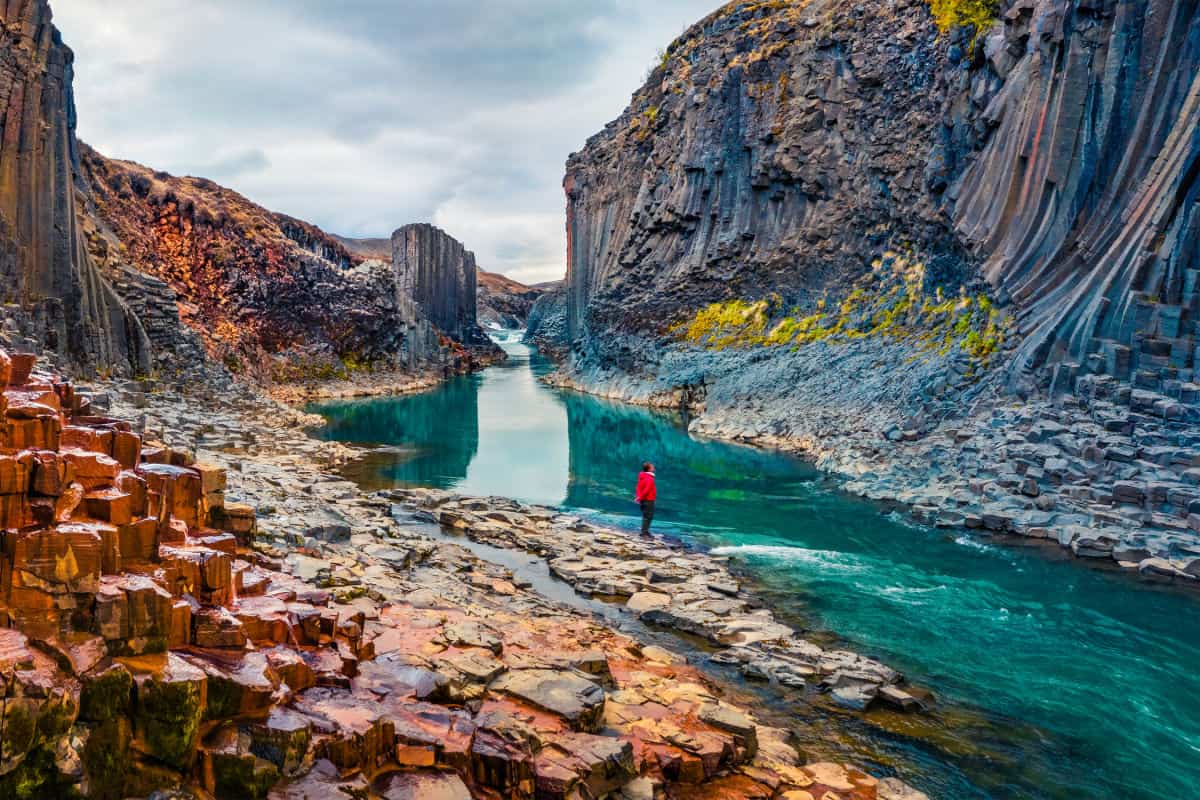Iceland has been rated as the most peaceful country by the Global Peace Index for several years in a row, and for good reason. With a low poverty rate, low crime, political stability, and a good healthcare system, it’s no wonder that its citizens are amongst the happiest in the world.
Travelers in Iceland can rest assured that they are in one of the safest destinations on the planet. However, safety isn’t the only reason Iceland brings in over a million tourists a year. Iceland is home to incredible natural wonders, like ice caves, lava fields, geothermal pools, and of course, the famous northern lights. With such magnificent landscapes and astonishing natural phenomena, it’s a bucket list destination for any adventurous traveler.
What To Do In Iceland
Explore Reykjavík
Iceland’s vibrant capital city is full of interesting attractions, from its colorful street art to its quirky museums. Visit some iconic landmarks like the Hallgrímskirkja Church and the Harpa Concert Hall. Reykjavík also has a lively nightlife, with plenty of bars, clubs, and restaurants to choose from.

Chase The Northern Lights
One of the most magical natural phenomena, the northern lights are a must-see for all visitors to Iceland. You’ll want to visit during winter to get a glimpse of this amazing light show, and even then, it is difficult to predict. Conditions must be perfect for this rare occurrence, including limited cloud cover, low light pollution, specific moon phases, and geomagnetic activity. With some luck, you might be able to cross this off your bucket list.

Visit The Hot Springs
Geothermal baths are some of Iceland’s most famous attractions. Visitors can relax in the warm waters while taking in stunning views. The Blue Lagoon is arguably the most popular thermal spa, but it is quite pricey, and you must make reservations sometimes months in advance. However, there are several hot springs along Iceland’s famous tour routes, including the more economical Secret Lagoon. This “secret” lagoon is not exactly unknown, so planning ahead is still recommended.

Go Whale Watching
Spotting whales in the wild is an incredible experience and one that is highly recommended when visiting Iceland. You can expect to see a variety of whale species, including humpbacks, white-beaked dolphins, and orcas. Schedule a tour and see if you can spot some of these majestic creatures in their natural habitat.

Take A Road Trip
Iceland’s unique landscapes are best enjoyed with a road trip. You can opt for a scheduled tour or rent a car to drive yourself around the most popular routes: the Golden Circle or Ring Road. The Golden Circle is only 140 miles and is possible to do as a day trip. The Ring Road, however, circles the entire country and requires at least a week or more. Whichever route you decide to choose, you’ll find stunning coastlines, geysers, magnificent waterfalls, lava fields, and glaciers along the way.

When To Visit
The best time to visit Iceland largely depends on what you’d like to do and see. You may also want to take crowds and prices into account. For warm weather and longer days, July and August are the best months to visit. In June, you can even experience 24 hours of daylight. This is also the ideal time for whale-watching. However, the midnight sun is the opposite of what you want if you’re there for the aurora borealis. If the northern lights are top on your list, you’ll want to visit October through March.
July and August are the busiest months for travelers, which also makes them the most expensive. If you want to avoid the crowds (and high-season prices), this may not be the best time to visit. Visiting during the off-season or shoulder season will be less crowded and slightly easier on your wallet. Try late fall through early spring, but avoid December, as this is when most people visit to see the northern lights.

Getting There
Flights to Iceland are usually quite affordable from the U.S. east coast as well as major hubs out of Europe. Many budget airlines fly to Reykjavík, including EasyJet, Play Airlines, and Wizz Air. However, you’ll want to keep in mind that Iceland is not a cheap destination. Accommodations, excursions, rental cars, and dining out are all expenses to research and consider when planning your budget.

